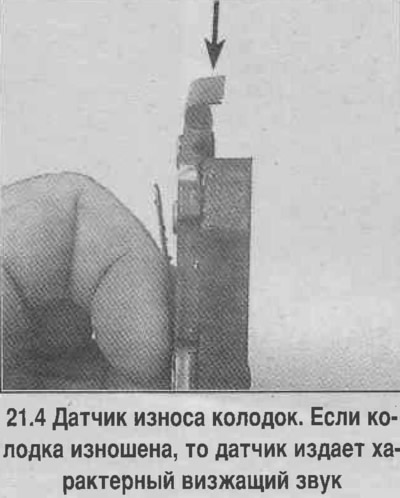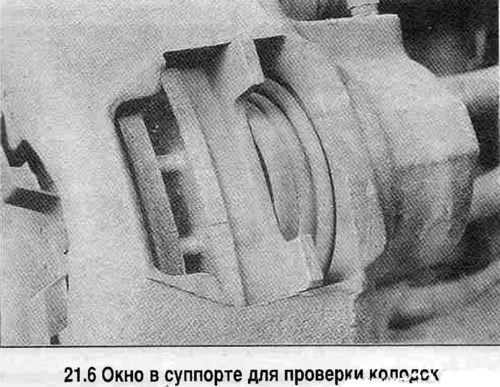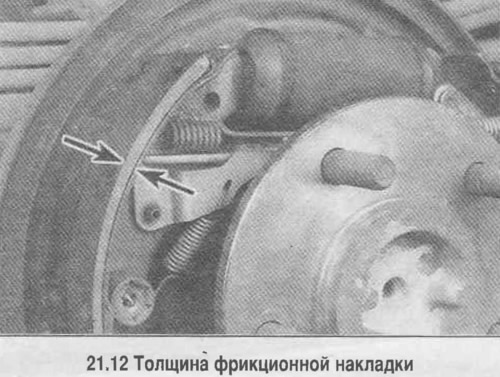2. Raise the car and remove the wheels.
Disc brakes
3. On the vehicles in question, disc brakes are provided on the front wheels only.
4. Most models have a pad wear sensor (see photo).

5. To inspect the pads, remove the wheel.
6. Pads can be checked through a window in the caliper (see photo). Check pad thickness. If the wear indicator is very close to the surface of the disc, or the residual thickness of the pad material is about 3 mm or less, then the pads should be replaced.

7. If there is any doubt about the normal state of the pads, then the pads should be removed.
8. Before installing the wheels, make sure there is no leakage near the hose fitting, check the condition of the hose. Replace damaged hose (see Chapter 9).
9. Check disk status (the disc is integral with the wheel hub). Disc with signs of heavy wear (deep furrows, traces of overheating, etc.) replace.
Drum brakes
10. Remove the drum. If the drum cannot be removed, then pour penetrating liquid between the axle shaft flange studs and the drum holes and tap the drum from the inside along the contour.
11. If the pads interfere with removal, then remove the plug from the brake shield and use a Phillips screwdriver to remove the pad drive lever from the limiter (see photo). The pads will move away from the drum, making it easier to remove. The procedure for removing drums on rear brakes with two wheel cylinders is discussed in Chapter 9.

12. Check the thickness of the friction linings (see photo). If the pad thickness (or distance to rivet heads) less than 1.6 mm, or there are signs of oiling or serious damage, replace the pads.

13. Check up a condition of springs of blocks.
14. Check that there are no fluid leaks from the wheel cylinder by unfolding the dust cover (see photo). If a leak is found, replace the cylinder.

15. Check the condition of the drums. Sand small defects with sandpaper, if necessary, grind the drums.
16. Install all removed parts and lower the vehicle. Tighten the wheel nuts to the specified torque.
Checking and adjusting the parking brake
17. The parking brake acts on the rear wheels, has a foot drive and is activated by a pedal.
18. The parking brake should hold the car on a steep slope (transmission must be in Neutral). Otherwise, the parking brake needs to be repaired (see Chapter 9).
